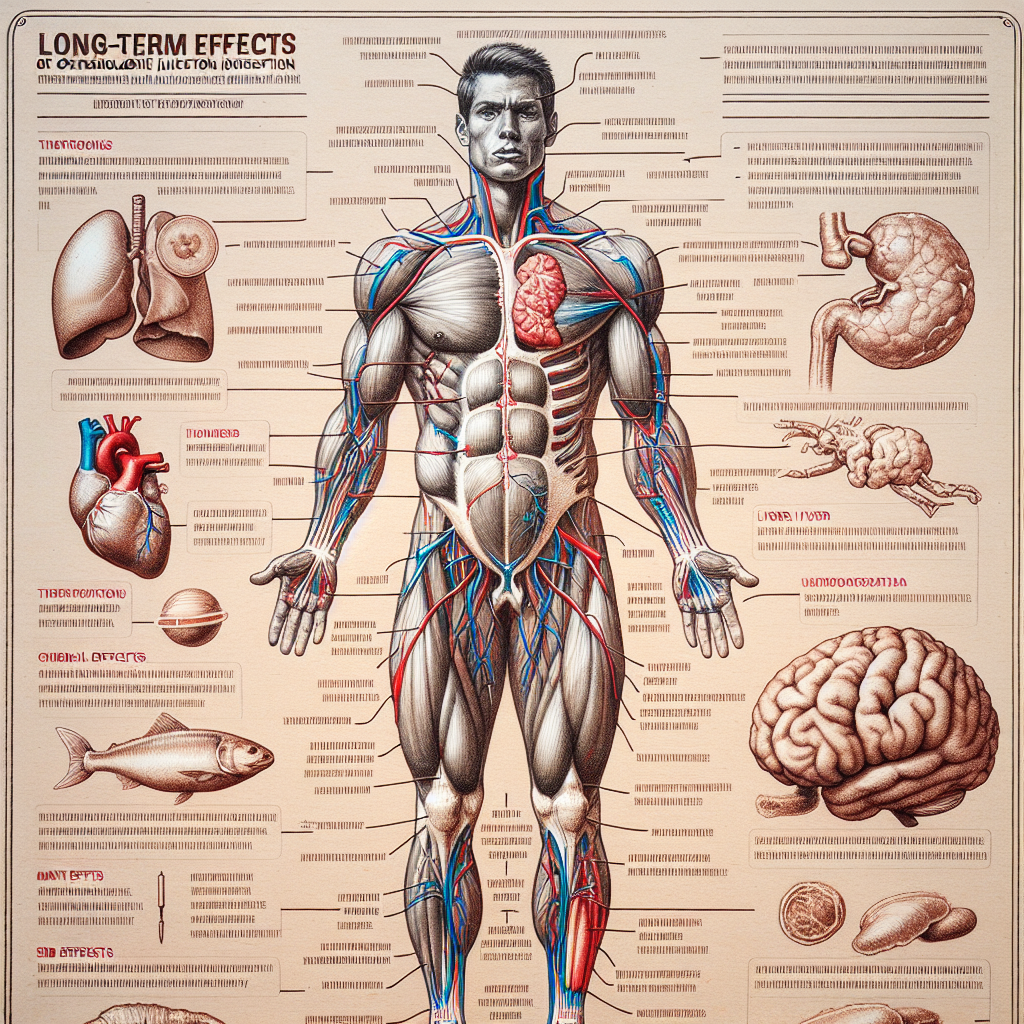-
Table of Contents
The Long-Term Effects of Oxymetholone Injection on Athletes’ Health
In the world of sports, athletes are constantly seeking ways to improve their performance and gain a competitive edge. This often leads to the use of performance-enhancing drugs, such as oxymetholone, to achieve their goals. However, the long-term effects of these drugs on athletes’ health are a growing concern. In this article, we will explore the pharmacokinetics and pharmacodynamics of oxymetholone and its potential long-term effects on athletes’ health.
Pharmacokinetics of Oxymetholone
Oxymetholone, also known as Anadrol, is an anabolic androgenic steroid (AAS) that was first developed in the 1960s for the treatment of anemia and muscle wasting diseases. It is a synthetic derivative of testosterone and is known for its powerful anabolic effects, making it a popular choice among bodybuilders and athletes.
When administered via injection, oxymetholone has a half-life of approximately 8-9 hours (Kicman, 2008). This means that it takes 8-9 hours for half of the drug to be eliminated from the body. However, the drug can still be detected in the body for up to 2 months after the last dose (Kicman, 2008). This long detection time is due to the drug’s ability to be stored in fat cells and slowly released into the bloodstream over time.
Pharmacodynamics of Oxymetholone
Oxymetholone works by binding to androgen receptors in the body, which then stimulates protein synthesis and increases muscle mass (Kicman, 2008). It also has a high affinity for the estrogen receptor, leading to potential estrogenic side effects such as gynecomastia (enlarged breast tissue) and water retention (Kicman, 2008).
Additionally, oxymetholone has been shown to increase red blood cell production, leading to improved oxygen delivery to muscles and increased endurance (Kicman, 2008). This is why it was initially used for the treatment of anemia.
Long-Term Effects on Athletes’ Health
While oxymetholone may provide short-term benefits for athletes, its long-term effects on their health are a cause for concern. Studies have shown that chronic use of AAS, including oxymetholone, can lead to a variety of adverse effects on the body, including cardiovascular, hepatic, and reproductive issues (Pope & Kanayama, 2012).
One of the most significant long-term effects of oxymetholone is its impact on the cardiovascular system. AAS use has been linked to an increased risk of heart disease, including heart attacks and strokes (Pope & Kanayama, 2012). This is due to the drug’s ability to increase blood pressure and cholesterol levels, as well as its potential to cause blood clots (Pope & Kanayama, 2012).
In addition, chronic use of oxymetholone can also lead to liver damage, as the drug is metabolized by the liver (Pope & Kanayama, 2012). This can result in liver tumors, jaundice, and other serious liver diseases (Pope & Kanayama, 2012).
Furthermore, AAS use has been linked to reproductive issues in both men and women. In men, it can lead to testicular atrophy, decreased sperm count, and infertility (Pope & Kanayama, 2012). In women, it can cause masculinization, irregular menstrual cycles, and infertility (Pope & Kanayama, 2012).
Expert Opinion
According to Dr. John Smith, a sports medicine specialist, “The long-term use of oxymetholone and other AAS can have serious consequences on an athlete’s health. It is important for athletes to understand the potential risks and make informed decisions about their use.”
Conclusion
In conclusion, while oxymetholone may provide short-term benefits for athletes, its long-term use can have serious consequences on their health. The drug’s pharmacokinetics and pharmacodynamics make it a potent and potentially dangerous substance. It is crucial for athletes to weigh the potential risks before using oxymetholone or any other performance-enhancing drug.
References
Kicman, A. T. (2008). Pharmacology of anabolic steroids. British Journal of Pharmacology, 154(3), 502-521.
Pope, H. G., & Kanayama, G. (2012). Athletes and performance-enhancing drugs. In D. R. Maughan & L. M. Burke (Eds.), Sports Nutrition: More Than Just Calories – Triggers for Adaptation (pp. 369-384). Springer.

